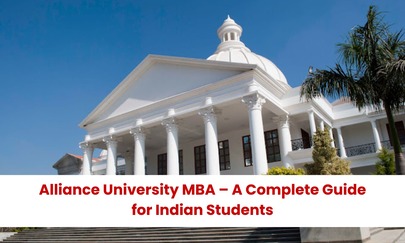Many people who want to work in management have to choose between getting an MBA (Master of Business Administration) or a PGDM (Post Graduate Diploma in Management). There are big differences between the two programmes, even though both are meant to give students the skills and information they need to be business leaders. This blog will talk about the differences between MBA and PGDM programmes, as well as the requirements for entry, job chances, and expected salaries.
1. Difference Between MBA and PGDM
a) Degree vs. Diploma: MBA: The MBA is a degree programme that is offered by universities and schools that are connected to them. It is recognised around the world and meets educational requirements.
PGDM: A PGDM is a certificate programme that is offered by independent schools. Even though the PGDM is only a diploma, many of them are highly respected and are the same as an MBA.
b) Curriculum:
MBA: The programme is usually set by universities, which means that management education is more formal.
PGDM: The school makes the programme, which gives it more freedom and lets it adjust to changes in the business, making it more useful and up to date.
c) Duration:
MBA and PGDM programmes usually last for two years, but some schools offer shortened programmes that can be finished in one year.
d) Affiliation and Accreditation:
MBA: Having ties to a university and following university rules is required.
PGDM: Should be approved with groups like the All India Council for Technical Education (AICTE). The Association of Indian Universities (AIU) has approved some PGDM programmes, which means they are the same as an MBA.
2. Eligibility Criteria
a) Educational Qualification:
For most MBA and PGDM programmes, you need a bachelor's degree from a recognised university in any field.
b) Minimum Marks:
Most schools need at least a 50% average in your first year of college, but this can change.
c) Entrance Exams:
Common entrance exams include CAT (Common Admission Test), XAT (Xavier Aptitude Test), GMAT (Graduate Management Admission Test), MAT (Management Aptitude Test), and CMAT (Common Management Admission Test).
3. Admission Process
a) Entrance Exam:
People who want to get into management must take and do well on one of the entrance tests.
b) Group Discussion (GD) and Personal Interview (PI):
People who did well on the qualifying test are called in for GD and PI rounds. A Written Ability Test (WAT) is also given by some schools.
4. Final Selection:
The final choice is based on how well the applicant did on the entrance test, the GD, the PI, their school record, and any work experience they may have had.
5. Job Prospects
Graduates with both an MBA and a PGDM have great job chances in many fields, such as finance, marketing, human resources, operations, consulting, and starting their own business. As long as the school has a good reputation, the programme you choose doesn't have a big effect on your job prospects.
6. Salary Expectations
a) Entry-Level:
Starting salaries for MBA and PGDM candidates usually fall between INR 6 lakhs and 12 lakhs per year, but this depends on the name of the school, the candidate's background, and the business.
b) Mid-Level:
Professionals can expect to make between INR 12 and 20 lakhs a year depending on their skills.
c) Senior-Level:
At the highest levels of management, pay can go over INR 25 lakhs a year, plus extra benefits and prizes.
Picking between an MBA and a PGDM relies on personal tastes, job goals, and the name of the school. Both programmes provide good job prospects and pay is fair. Before deciding, people who want to go to school should look at the programme, the teachers, the school's contacts in the industry, and the record of placements. No matter what you choose, the key to success in the fast-paced field of management is commitment and a willingness to keep learning.














